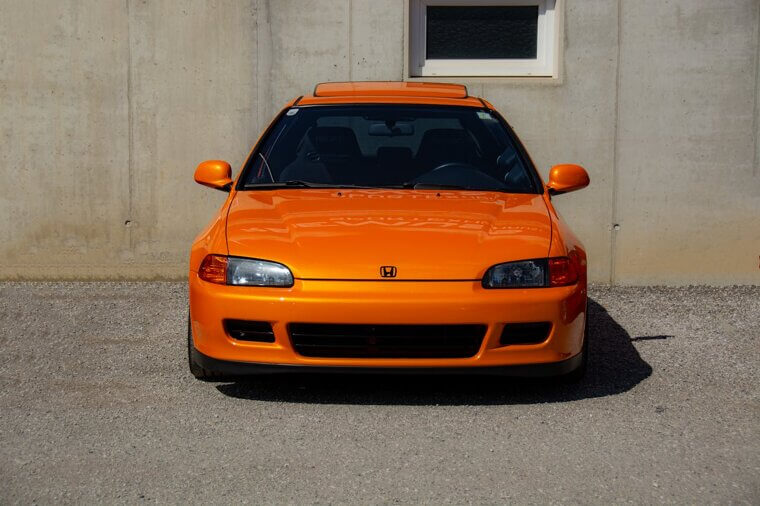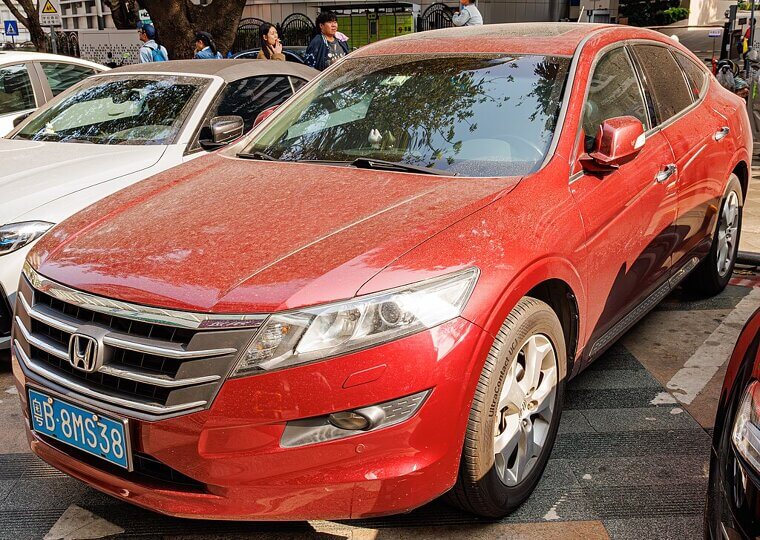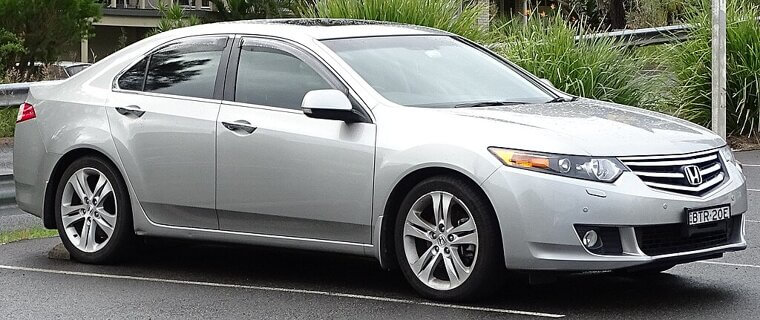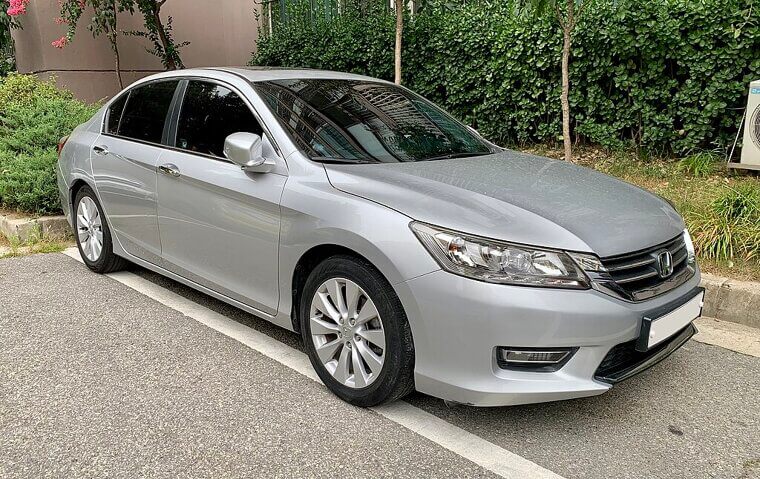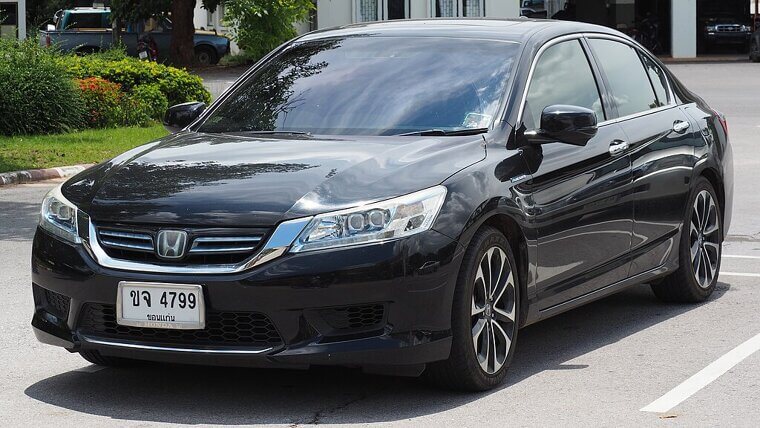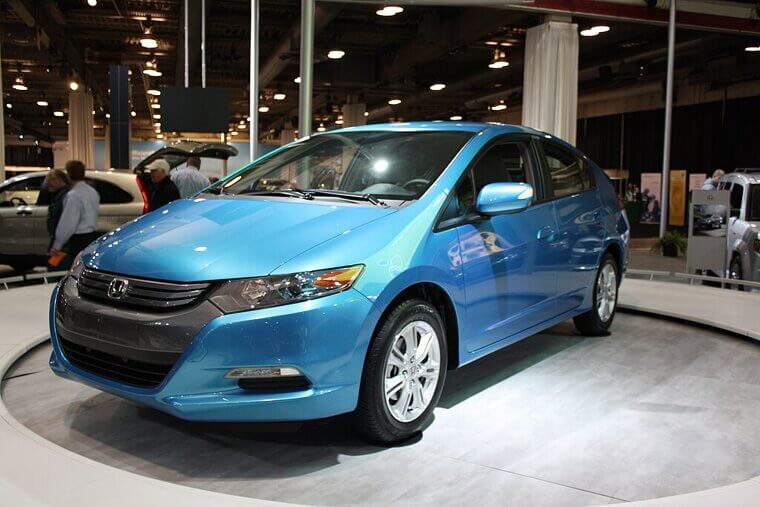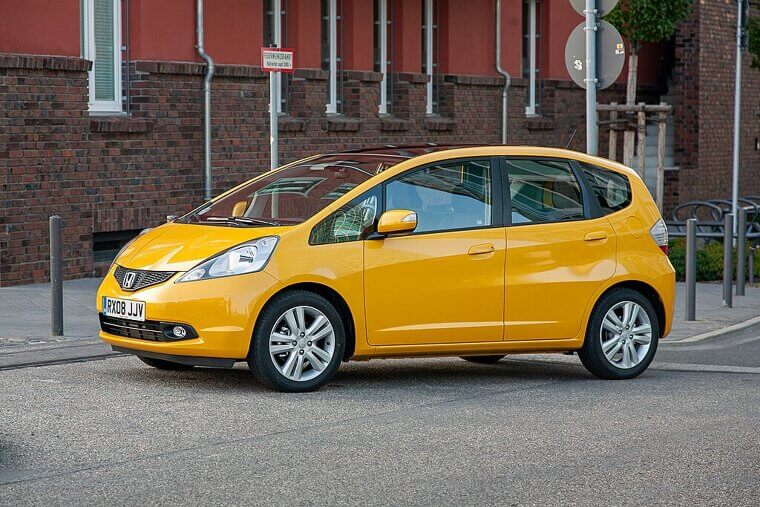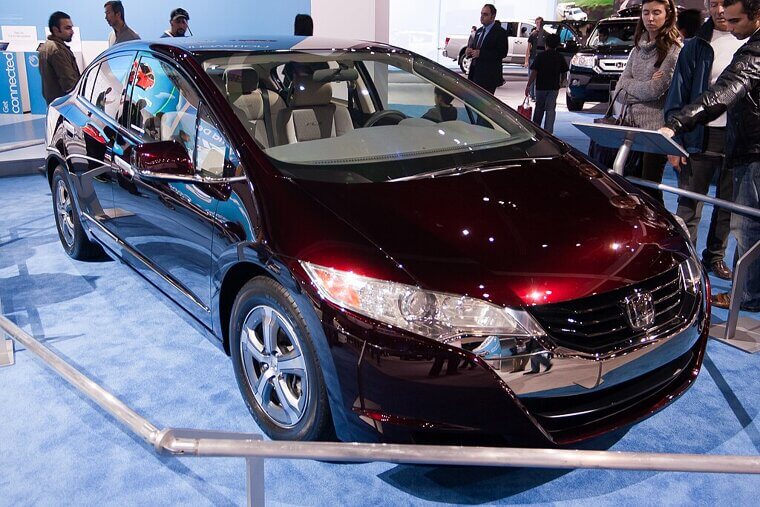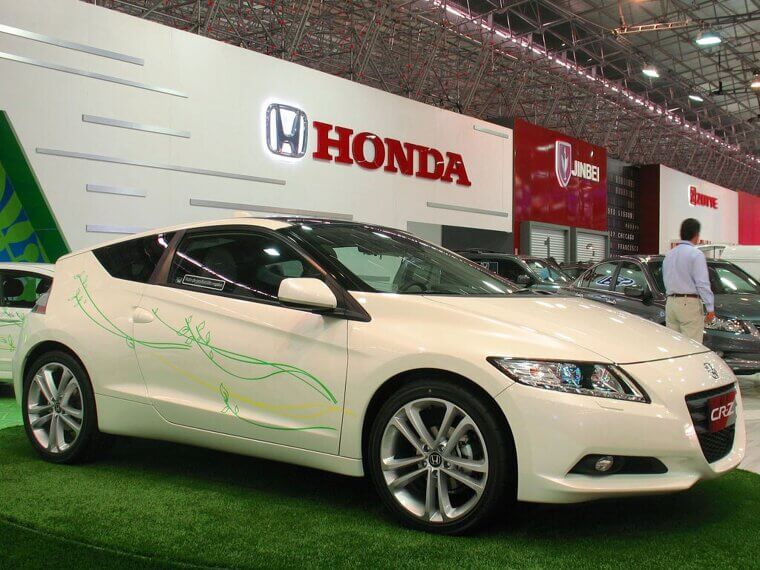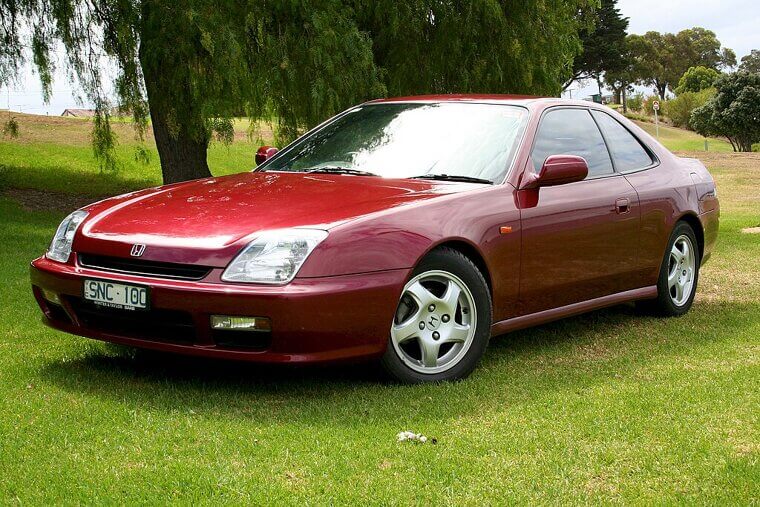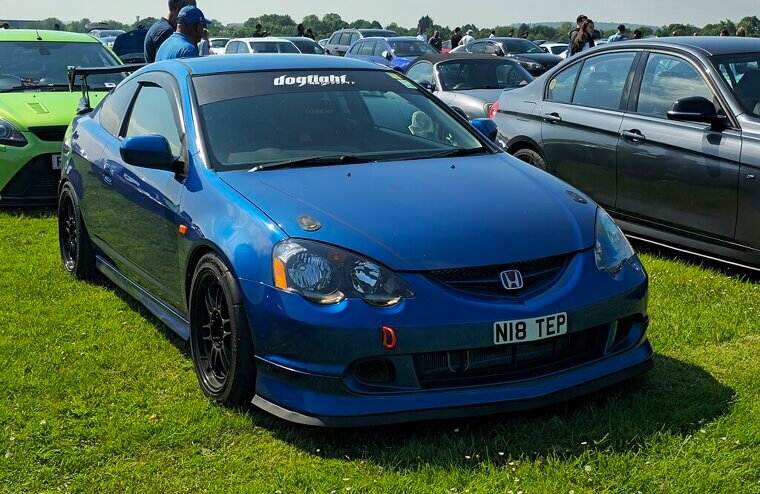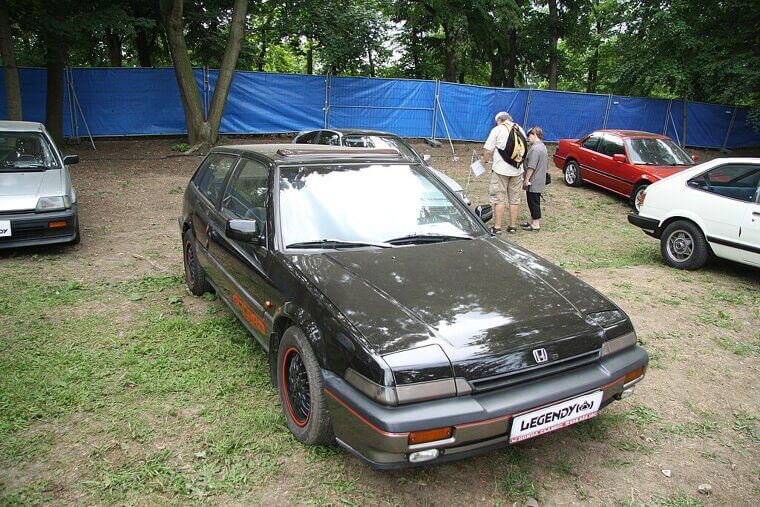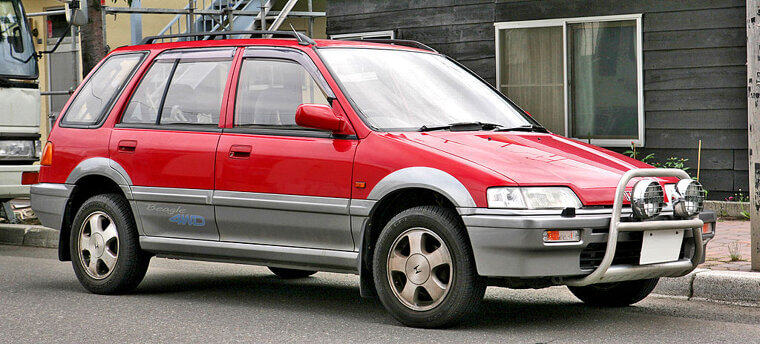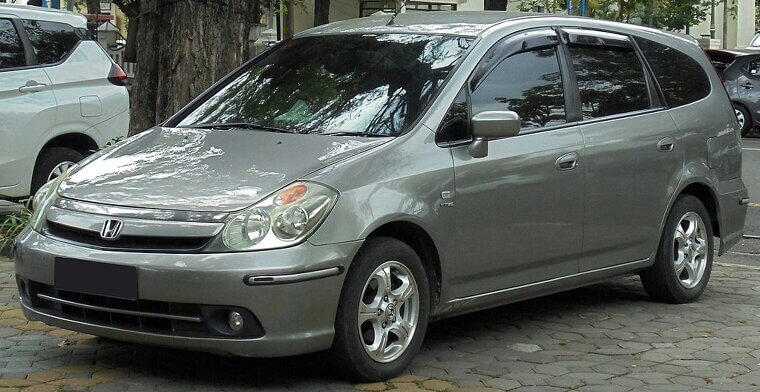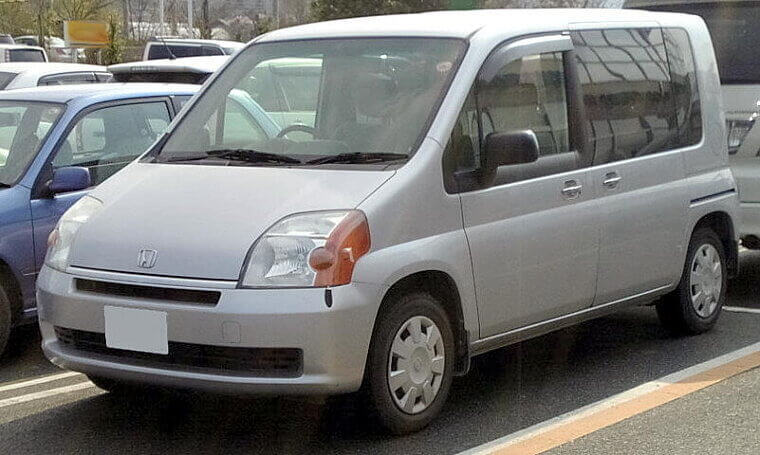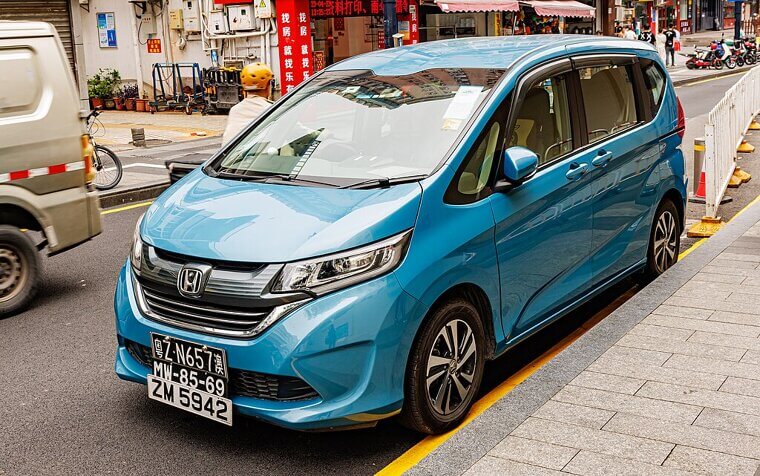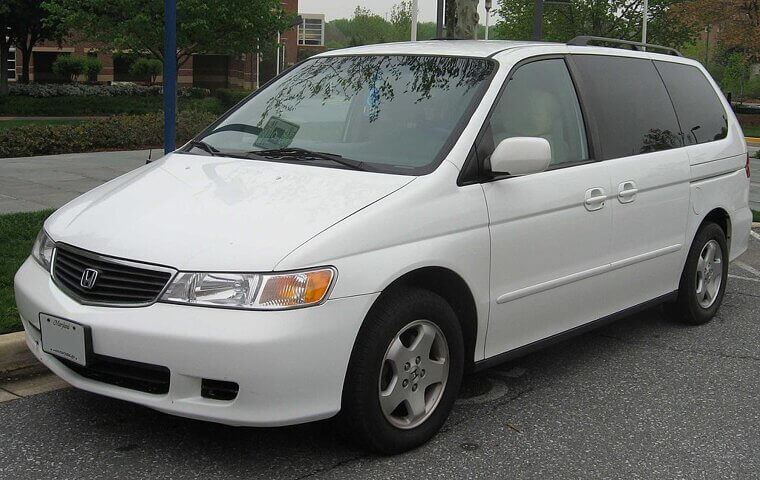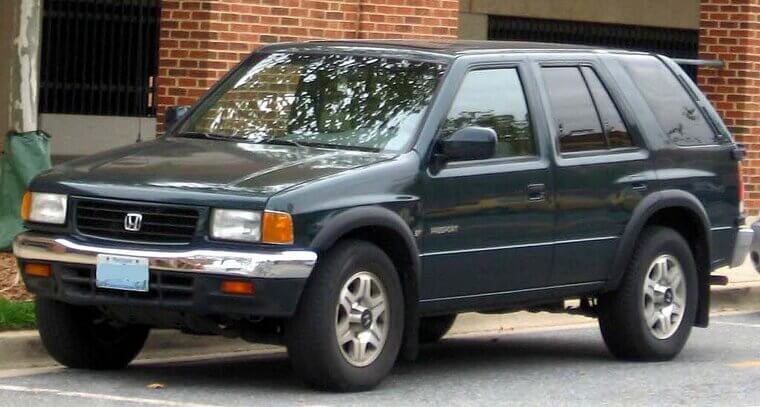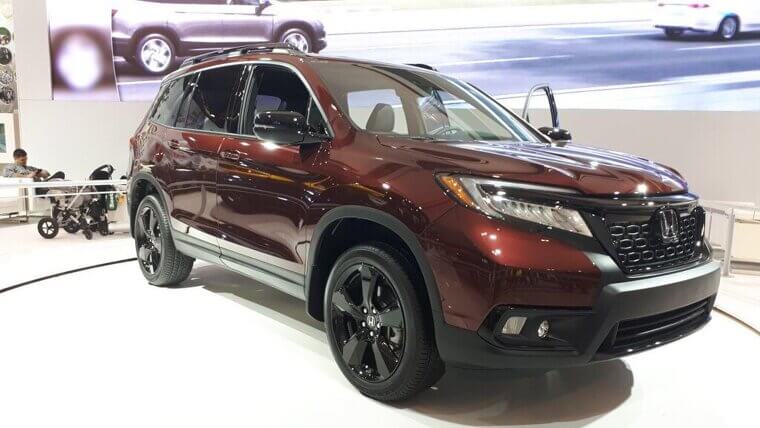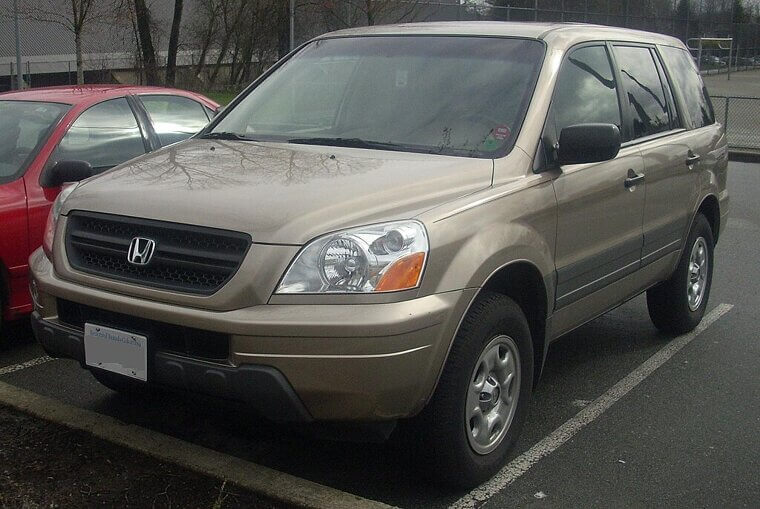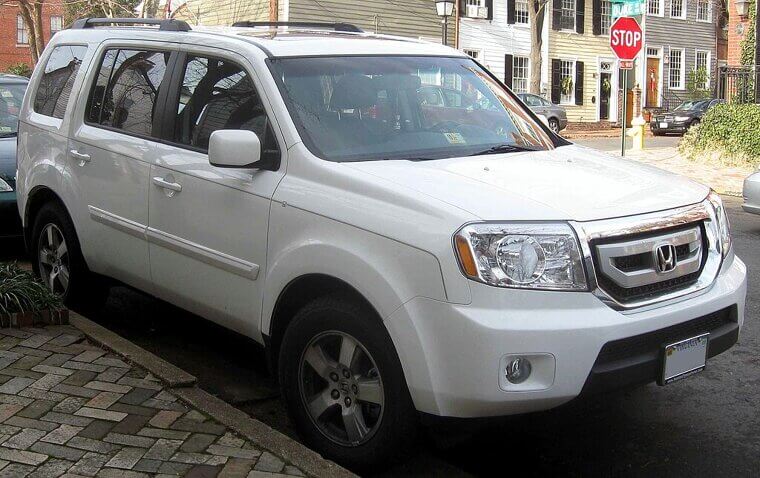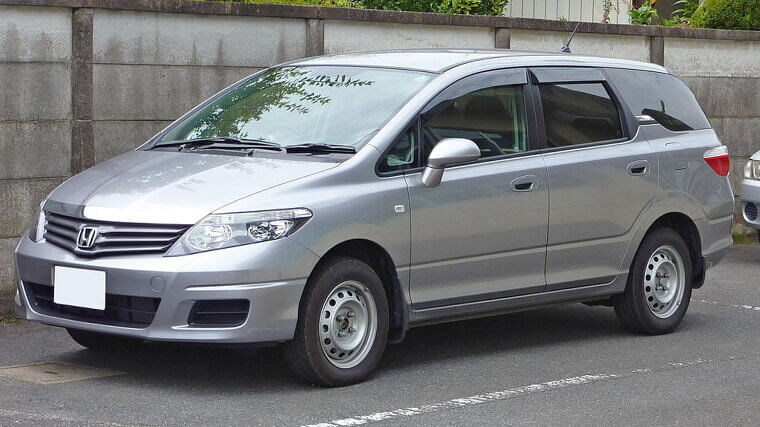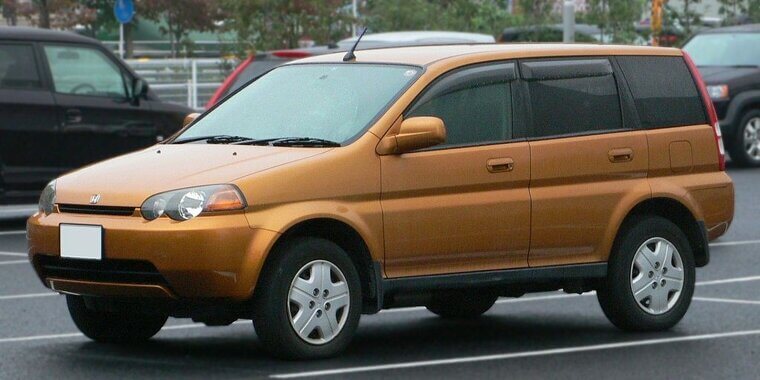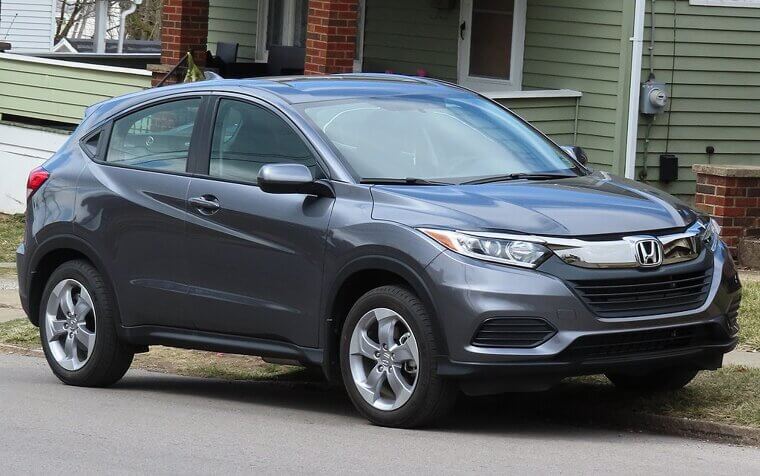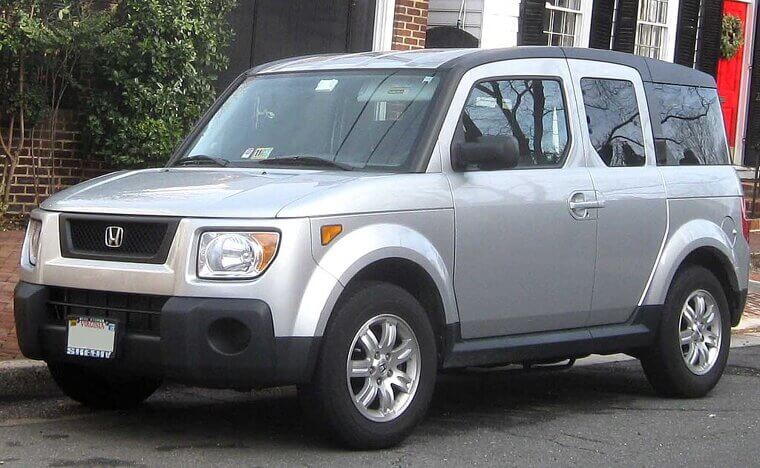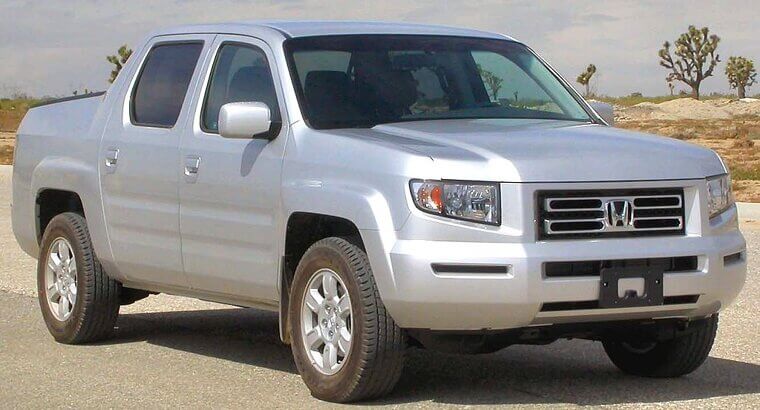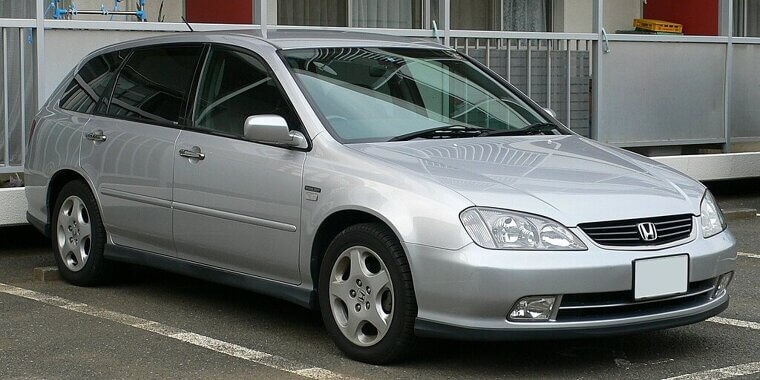Honda Civic (2012–2015, 9th Gen, Pre-Facelift)
This Civic was roasted so hard at launch that Honda rushed out an emergency facelift. Squished proportions, cheap-looking plastics, and a droopy face gave it the aura of a melted toy car. It drove fine, but design-wise it felt like Honda accidentally submitted a draft sketch.
Honda Civic (2001–2005, 7th Gen)
The 7th-gen Civic ditched its edgy ’90s look for something safer… and ended up looking like an off-brand Corolla. Its interiors were plain, exteriors anonymous, and enthusiasm nonexistent. Reliable? Yes. Attractive? Only if you looked at it with your eyes closed.
Honda Accord Crosstour (2010–2015)
Honda wanted to combine sedan elegance with SUV utility; what we got was a lumpy fastback that confused everyone. Too tall for a sedan and too stubby for an SUV, the Crosstour looked like it was designed by committee during a power outage.
Honda Accord (2008–2012, 8th Gen)
The Accord grew bigger and bulkier, and in the process it lost its balance. Its slabby sides and swollen proportions gave it a bloated look, like a car that ate one too many buffets. It was comfortable, yes, but unattractive.
Honda Accord (2013–2017, 9th Gen)
Facelifts are supposed to fix problems. Instead, Honda gave this Accord a massive chrome beak that looked like a kitchen appliance handle. Its otherwise clean lines were hijacked by this shiny proboscis, distracting from everything else. It was a “Notice me,” but for the wrong reasons.
Honda Accord Hybrid (2014–2017)
The Hybrid Accord got its own unique grille treatment, and it wasn’t flattering. Slim headlights met a wide, toothy maw that looked more insect than elegant. The regular Accord already leaned bland; the Hybrid doubled down with eco-car awkwardness. It felt like you were driving a grinning robot vacuum.
Honda Insight (2009–2014, 2nd Gen)
This was Honda’s attempt to copy the Prius, and it resembled a photocopy that jammed halfway through. Bland wedge profile, awkward rear proportions, and dull details ensured it was nobody’s poster car. It was only attractive if you’re into copycat designs committed with a blunt pencil.
Honda Jazz/Fit (2001–2008, 1st Gen)
Beloved for practicality, mocked for looks, the first-gen Fit was tall, stubby, and slightly bug-eyed. It packed space like a TARDIS, but from the outside it resembled a startled hamster. Fans defended it as “cute,” detractors said, “cheap.” Either way, it wasn’t winning any beauty contests.
Honda FCX Clarity (2008–2014)
A science experiment on wheels, the FCX Clarity had proportions only a lab could love. Awkward length, drooping headlights, and strange rear haunches made it look like three cars glued together. Futuristic intent didn’t translate to futuristic beauty.
Honda CR-Z (2010–2016)
Honda hyped the CR-Z as a sporty hybrid spiritual successor to the CRX. What buyers got was a confused hatchback with heavy lines, stubby proportions, and an identity crisis. It wasn’t sporty enough for enthusiasts, nor sleek enough for hybrid buyers.
Honda Prelude (1997–2001, 5th Gen)
The Prelude’s final generation tried to look muscular but ended up looking like a brick with headlights. Gone was the sleek ’90s coupe charm; in came awkward slab sides and a heavy stance. It drove well, but had the curb appeal of a two-door Accord that skipped leg day.
Honda Integra/Acura RSX (2002–2006)
Replacing the much-loved Integra, the RSX had big shoes to fill and showed up in clogs. The bubbly proportions and generic styling lacked the sharpness of its predecessors. It wasn’t ugly, but it also wasn’t memorable. Think of it as the “safe haircut” after a wild youth.
Honda Legend (2004–2012, Acura RL in US)
Honda’s flagship sedan aimed for Lexus-level elegance but delivered a snoozy slab of chrome. Bland front fascia, awkward rear, and styling so anonymous it could vanish in a parking lot. Luxury was inside, not outside, and buyers noticed.
Honda Accord AeroDeck (1985–1989)
Half coupe, half wagon, fully odd, the AeroDeck’s long roof and hatchback rear gave it the look of a station wagon that forgot to grow up. It’s the kind of design you’d defend with “well, it’s practical,” while secretly wishing it looked less like a hearse.
Honda Civic Wagon (1984–1987, 3rd Gen)
This Civic wagon had all the charm of a toaster on wheels. Upright, boxy, and plain, it resembled something IKEA flat-packed rather than a sleek car. Buyers loved its reliability, but nobody parked one outside and thought, “Wow, that’s sharp.”
Honda Civic Shuttle (1987–1991, 4th Gen)
Slightly rounder than the previous Civic wagon (but still awkward), the Shuttle was a tall, gawky hatch that seemed caught between station wagon and minivan. It had practicality in spades but style in short supply - like someone stretched a Civic hatchback until it yawned.
Honda Stream (2000–2006, 1st Gen)
The Stream wanted to be a sporty minivan (an impossible assignment). Its long, low roofline gave it strange proportions - neither graceful nor muscular - and while it wasn’t hideous, it just felt… off. Families bought them for utility, not looks.
Honda Mobilio (2001–2008)
Tall, awkward, and relentlessly box-shaped, the Mobilio was more like a Lego creation than a family car. With flat sides and a stubby nose, it had all the aerodynamic grace of a filing cabinet. Honda pitched it as youthful and practical, but it wasn’t pretty.
Honda Freed (2008–present)
The Freed sits in that uncanny valley between hatchback and minivan, managing to inherit the least attractive traits of both. Tall and narrow, with a pinched face, it looks perpetually surprised. It’s incredibly useful for families in tight cities… but style-conscious buyers likely fled the showroom quickly.
Honda Odyssey (1999–2004, 2nd Gen US)
Honda’s second shot at the American minivan was reliable and roomy, but it also had the styling spice of unsalted crackers. Slab sides, droopy front, and uninspired proportions made it fade instantly into suburbia. Parents loved the sliding doors, kids loved the space, no one loved the looks.
Honda Odyssey (2018–present, 5th Gen US)
The fifth-gen Odyssey came with a pinched, chrome-heavy nose that looked like it was frowning at school drop-off duty. It’s a fine minivan otherwise, but the styling feels like Honda tried too hard to make it “premium.”
Honda Passport (1994–1997)
Honda’s first Passport was an Isuzu Rodeo in disguise, and not even a convincing one. It looked rugged-ish but carried the vibe of a copycat SUV. Buyers knew; it was like showing up at prom in your cousin’s hand-me-down tux. Absolutely not a head-turner.
Honda Passport (2019–present)
The modern Passport promised adventure but delivered boxy anonymity. Its styling is the SUV equivalent of beige carpeting: inoffensive, but hardly inspiring. Chunky proportions, blunt nose, and generic taillights made it blend in at mall parking lots everywhere.
Honda Pilot (2003–2008, 1st Gen)
Honda’s first Pilot was useful and big, but its design screamed “appliance.” Rounded yet bland with headlights that looked half-asleep, it had all the charisma of a chest freezer. Perfect for families who wanted space without drama. Stylish? Nope.
Honda Pilot (2009–2015, 2nd Gen)
Honda doubled down and made the second Pilot a literal brick on wheels. Blocky lines, square fenders, and a face like a grumpy Lego figure defined it. It was sturdy, practical, and utterly devoid of elegance. Owners loved the room; bystanders wondered if Honda mistook SUV design for Jenga.
Honda CR-V (2002–2006, 2nd Gen)
The second-gen CR-V was bubbly in all the wrong ways. Its tall, roundish body made it look like a jellybean on stilts. Practical and reliable, yes, but attractive? Heck, no. The rear-mounted spare tire only added to the awkward proportions.
Honda Airwave (2005–2010)
The Airwave was a stretched Fit with wagon ambitions and none of the charm. Its long, awkward roofline and droopy nose made it look perpetually tired. It offered practicality in spades, but the design was like an afterthought scribbled in the margins of a meeting.
Honda HR-V (1998–2006)
Honda’s first HR-V was bold for its time - maybe too bold. Boxy and stubby with weird proportions, it looked like a Civic hatchback in a funhouse mirror. Some loved its quirkiness, but most just scratched their heads. “Joy Machine,” Honda called it. Joyfully odd maybe, but attractive is a stretch.
Honda HR-V (2016–2021)
The newer HR-V was fussy, overstyled, and packed with random lines. Its face had more creases than a well-used road map, and the proportions felt bloated. It’s like Honda tried to modernize awkwardness instead of fixing it. It sold well, but wasn’t good-looking on its best day.
Honda Element (2003–2011)
The Element embraced its inner fridge and leaned into the box look. Plastic body panels, flat sides, and a cartoonish vibe made it look like it rolled out of a kid’s toy bin. It was functional, cool in some niche circles, but never conventionally attractive.
Honda Ridgeline (2006–2014)
Honda’s first truck was practical, clever, and tough, just not handsome. The odd, stubby proportions and sloped bed sides gave it the look of a pickup melting in the sun. Truck purists mocked it endlessly, and even Honda fans admitted it was a great truck trapped in a weird body.
Honda Avancier (1999–2003)
The Avancier was Honda’s attempt at a luxury wagon with SUV hints. The result? A long, ungainly machine that couldn’t quite decide what it wanted to be. It was too tall for elegance, too soft for ruggedness, and too bland for luxury. It was a car-shaped shrug.
Honda Z (1998–2002)
The Z was a kei-class SUV with bubbly, bug-eyed proportions. Its rounded nose and squat body resembled a toy car more than a serious ride. It was perfect for Japanese cities, but only attractive if your idea of handsome is wheeled cartoon frogs.
Honda Vamos (1999–2018)
The Vamos was pure kei-van quirk: upright, tiny, and unapologetically dorky. Its tall, skinny body looked like it might tip over in a stiff breeze. To its credit, it maximized interior space. To its detriment, it looked like a lunchbox with headlights. Japan loved it, but nobody called it pretty.
Honda Crossroad (1993–1998)
Honda briefly sold a rebadged Land Rover Discovery as the Crossroad. It carried over all the boxy awkwardness, plus Land Rover’s reliability issues. Tall, upright, and ungainly, it looked more at home on a safari than a city street. It was Honda’s least “Honda-looking” car ever, and certainly not one of its best-dressed.

